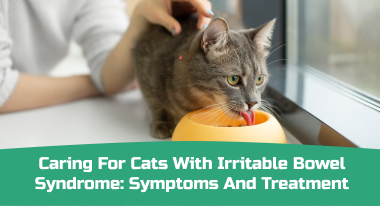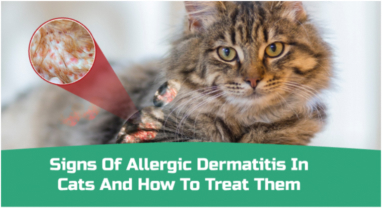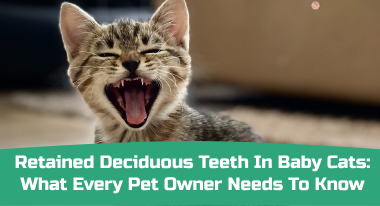Table of Contents
The world of feline health is forever changing with the emergence of viral illness. Feline immunodeficiency virus (FIV) is potentially life-threatening in cats. Similar to AIDS in humans, FIV is a major viral infection in cats that is species-specific. It is also known as ‘Feline AIDS,’ transmitted from cat to cat.
FIV is a Lentivirus that causes the disease to progress slowly, and the infected feline may remain healthy for many years before showing clinical signs of illness. FIV stays in the blood and saliva of infected cats.
This article discusses the different signs and symptoms of the feline immunodeficiency virus (FIV) and ways to prevent infection in the future. Read on for more information about what you need to know about FIV in cats — and how you can ameliorate its effects before it’s too late.
What are the Factors of Transmission of FIV?
FIV is most frequently transmitted through a bite wound from a diseased feline to a healthy cat, and the saliva is directly transferred into the blood. In rare scenarios, the infection also may be transmitted from an infected feline mother cat to their kittens. If the mother gets infected during pregnancy, the transmission risk to the kittens is increased.
The virus damages the immune system affects the white blood cells, and gradually weakens the immune system. FIV-infected cats are vulnerable to secondary infections.
Sharing water bowls or mutual grooming is not a disease transmission route. Hence the files in the domestic environment with astable social structures are at little risk of having FIV infections. Sexual intercourse is not an effective means of spreading FIV among cats.
The prevalence of infection varies greatly; as stated in North America, approximately 2.5-5% percent of healthy cats are infected with FIV. As the primary cause of FIV is transmitted as bite wounds, unneutered male cats with outdoor access with aggressive fighting behavior are at the most significant risk. There are yet to be any commercially available to protect against FIV, and as a protective measure, keep your pets indoors and if you test the cats within the household.
What are the Symptoms of Feline Immunodeficiency Virus?
As the FIV virus spreads slowly, the affected felines are not exhibiting any noticeable symptoms. If your puffball is showcasing any of the feline immunodeficiency virus symptoms, get your pet tested immediately:
- Chronic Fever
- Lethargy
- Gingivitis and oral infections
- Ataxia
- Seizures
- Uveitis
- Poor coat condition
- Lack of appetite
- Recurrent eyes, skin, upper respiratory tract, or bladder infection
- Persistent diarrhea
- Behavioral changes
- Signs of neurological disorders
You also may notice slow and steady weight loss in the affected pet. FIV symptoms also lead to cancer or blood disease.
Let’s get brevity on the signs with the visual illustration with an infographic:

| Signs Of Feline Immunodeficiency Virus Feline immunodeficiency virus affects the immune system making the pet susceptible to infections. The virus belongs to the retrovirus family of viruses, and usually, years after initial infection, FIV may eventually progress to feline AIDS. To keep your pet safe, let’s get aware of the signs of FIV: #1 Chronic Disease Fever of unknown origin, chronic skin disease, and lymph node enlargement are common clinical signs. A recurrent respiratory, ocular ( pertaining to eyes), and intestinal diseases are also witnessed in the pet. #2 Weight Loss Weight loss is a common sign seen in a feline infected with FIV. In the acute phase, vomiting, diarrhea, poor appetite, and lethargy appear when the cat contracts a secondary infection. #3 Neurological Disorder In certain cases of FIV in cats, the virus can affect the brain, and an ailment such as neoplasia is seen. Lymphoma or leukemia is another clinical sign seen in the infected pet. #4 Seizures Seizures, weakness, and behavior changes are observed in the affected cat. Infection also causes uveitis and conjunctivitis, or the Inflammation of the eye membrane around the eyes. #5 Stillbirths In the latent phase, the infection causes stillbirth and abortion in female felines. Abscesses develop in the sick pet along with other clinical signs such as runny nose and rhinitis. |
How do Vet Diagnose FIV?
When you notice any feline immunodeficiency virus symptoms in your pet, consult your veterinarian. Also, it’s advisable to take note of the signs you have observed. Vets diagnose the ailment through blood tests that detect antibodies to the virus.
The standard screening test is called an ELISA test or enzyme-linked immunosorbent assay. If a pet is diagnosed positive on the ELISA test, vets often reconfirm the results by retesting in eight weeks (for kittens) or submitting blood samples for a definitive Western blot test or PCR (polymerase chain reaction) test.
How to Treat FIV in Cats?
Primarily FIV treatment in cats includes treating and preventing secondary infections or diseases. However, there is yet to be a definitive cure for FIV. However, cats infected with FIV can live healthy lives for many years if managed appropriately, but if persistent fever and weight loss remain, the prognosis is generally less favorable.
The treatment goals aim to reduce the risk of secondary infections and aims to prevent the spread of FIV to another feline. And that can be achieved by keeping your pet indoors and isolated from other cats. Spaying & neutering also eliminates the risk of spreading FIV to kittens. The vet also suggests antiviral medications for FIV-positive cats with seizures or stomatitis.
As a part of the holistic approach to keeping the FIV-positive cat healthy, feed your cat a nutritionally balanced diet. Be vigilant and avoid offering uncooked food, raw meat and eggs, and unpasteurized dairy products to minimize the risk of food-borne bacterial and parasitic infections.
Wellness visits for FIV-infected are scheduled at least every six months. The vet performs a detailed physical examination of all body systems as a part of the treatment regime; complete blood count, serum biochemical analysis, and urine analysis should be performed annually.
The vet also offers fluid and electrolyte replacement therapy and primarily uses drugs developed for treating Human Immunodeficiency Virus. Zidovudine (AZT) helps in dental (stomatitis) or neurologic disease, and early treatment of FIV can extend an FIV-infected pet’s life expectancy.
What are the Stages of Feline Immunodeficiency Virus?
There FIV infection can be classified into three states – the acute stage, the asymptomatic (or latent) stage, and the progressive phase.
The acute phase of infection occurs 1-3 months after infection. The virus is carried to lymph nodes and reproduces in white blood cells T-lymphocytes. It spreads to other lymph nodes throughout the body, leading to temporary lymph node enlargement, and you may witness the symptoms in the affected feline, such as that is accompanied by fever, depression, and lack of appetite. This stage of infection may be mild, and the symptoms are often missed in other causes of fever.
Following the acute phase, infection leads to an asymptomatic phase. The asymptomatic or latent stage may last for months to multiple years. This virus replicates very slowly within the immune system, and the affected feline often does not show any outward signs of illness. Tests may diagnose clinical symptoms such as Infected white blood cells or increased blood proteins. In certain cases, the affected feline remains in this stage and never progresses to a more severe disease.
Latent stages lead to progressive phases as the virus continues to transmit through the immune system. The infected cat becomes a progressive immuno-compromised state and becomes more susceptible to secondary infections. You may observe the clinical signs such as chronic infections of the skin, urinary tract, eyes, or upper respiratory tract.
Gingivostomatitis is also common in this phase, and the pet is more likely to develop cancer and other immune-mediated blood disorders. Weight loss, behavioral changes, and neurological disorders are all possible. The severity of these illnesses is high and life-threatening.
Table:
FIV Stages and the Clinical Signs:
| Stages | Severity | Signs |
| Acute Phase | Mild | Lymph node enlargement FeverDepressionLack of appetite |
| Asymptomatic or the Latent Phase | Advanced | Infected white blood cell Increased blood protein |
| Progressive phases | High | Recurrent infections of the skin, eyes Urinary tract, or upper respiratory tract infectionGingivostomatitisCancerImmune-mediated blood disorders weight loss, SeizuresBehavioral changes Neurological disorders |
Conclusion
The effective way to prevent FIV in cats is to prevent their exposure to the virus. Keeping pets indoors helps to keep them away from potentially infected cats and reduces the probability of contracting FIV infection.
However, often FIV-infected cats are not diagnosed, and when you bring a pet to the household, it should be tested. To minimize transmission of FIV, especially in an environment where an FIV-positive cat has lived, clean and disinfect or replace food and water dishes, bedding, litter pans, and toys. Vacuuming carpets and mopping floors are also recommended. Also, before you buy a new cat or kitten, ensure to get it vaccinated and adopt a routine wellness care plan.
Disclaimer: The content on the site is for educational purposes only, and it does not provide medical advice. The shared information must not be treated as a substitute for or alternative for medical practitioner advice, diagnosis, or treatment. Regarding any concerns about your pet’s health, seeking veterinary guidance is of utmost necessity. Each pet has specific health, fitness & nutrition needs. Do not disregard, avoid or delay pet health-related advice from veterinarians based on reading the information provided on this site.
FAQs
How Is FIV Transmitted In Cats?
FIV in cats is primarily transmitted through the saliva of an infected cat, mostly through bite wounds
Also, it can be transmitted from a mother to her kittens. FIV typically does not spread through cats sharing food and water bowls, mutual grooming, or sharing a litter box.
What is the Life Expectancy of FIV in Cats?
Cats infected with FIV may live for months or years. However, the average life expectancy is five years from the time of diagnosis, but it also depends on the severity of the infection.
Is FIV Contagious?
The answer is yes. But FIV is a species-specific disease transmitted from cat to cat only via saliva. The disease may transfer to the kitten if a pregnant cat gets an infection.
What test Can Diagnose FIV in Cat?
FIV is primarily diagnosed through a screening test called an ELISA test (enzyme-linked immunosorbent assay). To determine the definitive result of the ELISA test, vets also perform a Western blot test or PCR (polymerase chain reaction) test.



